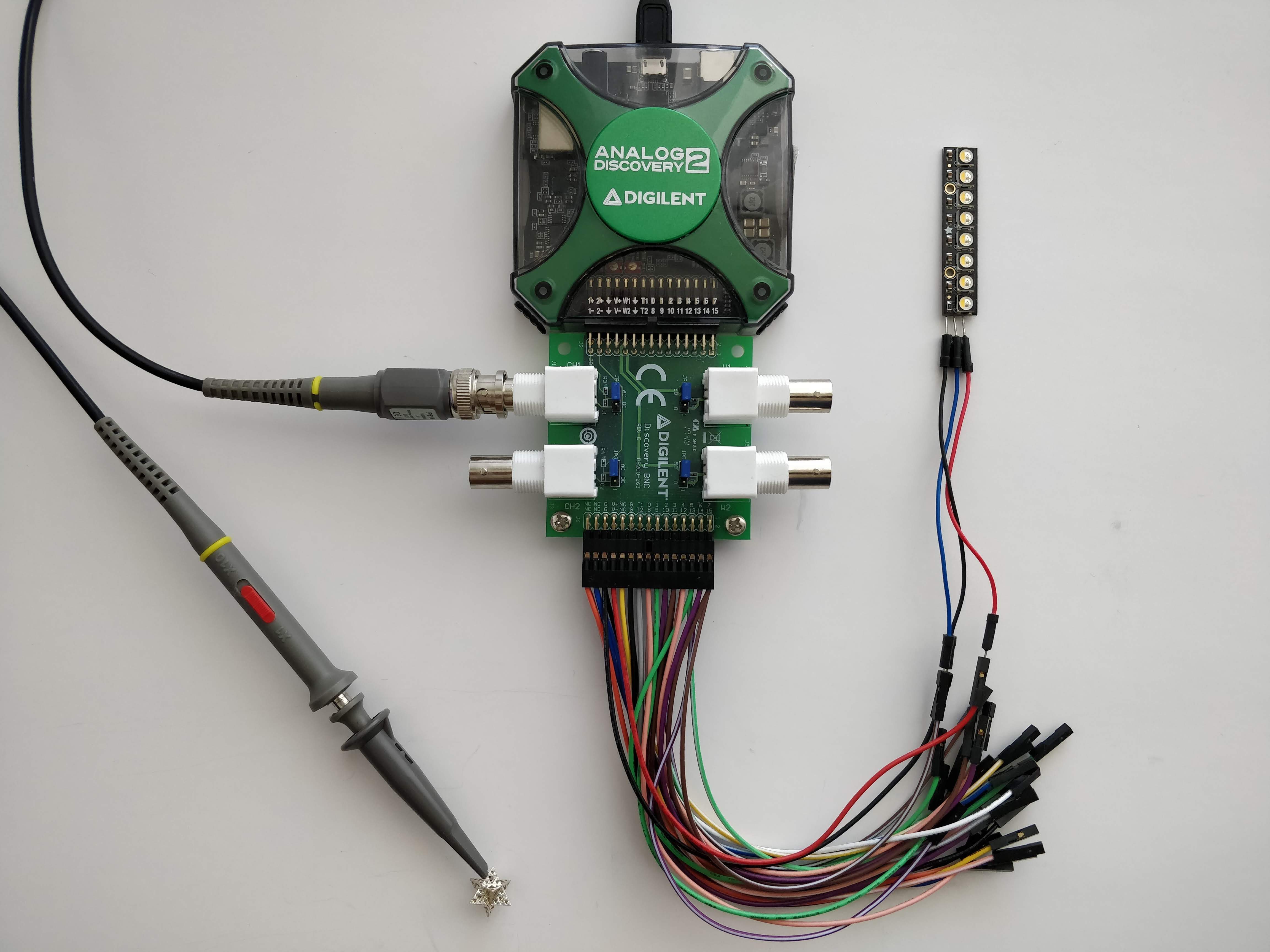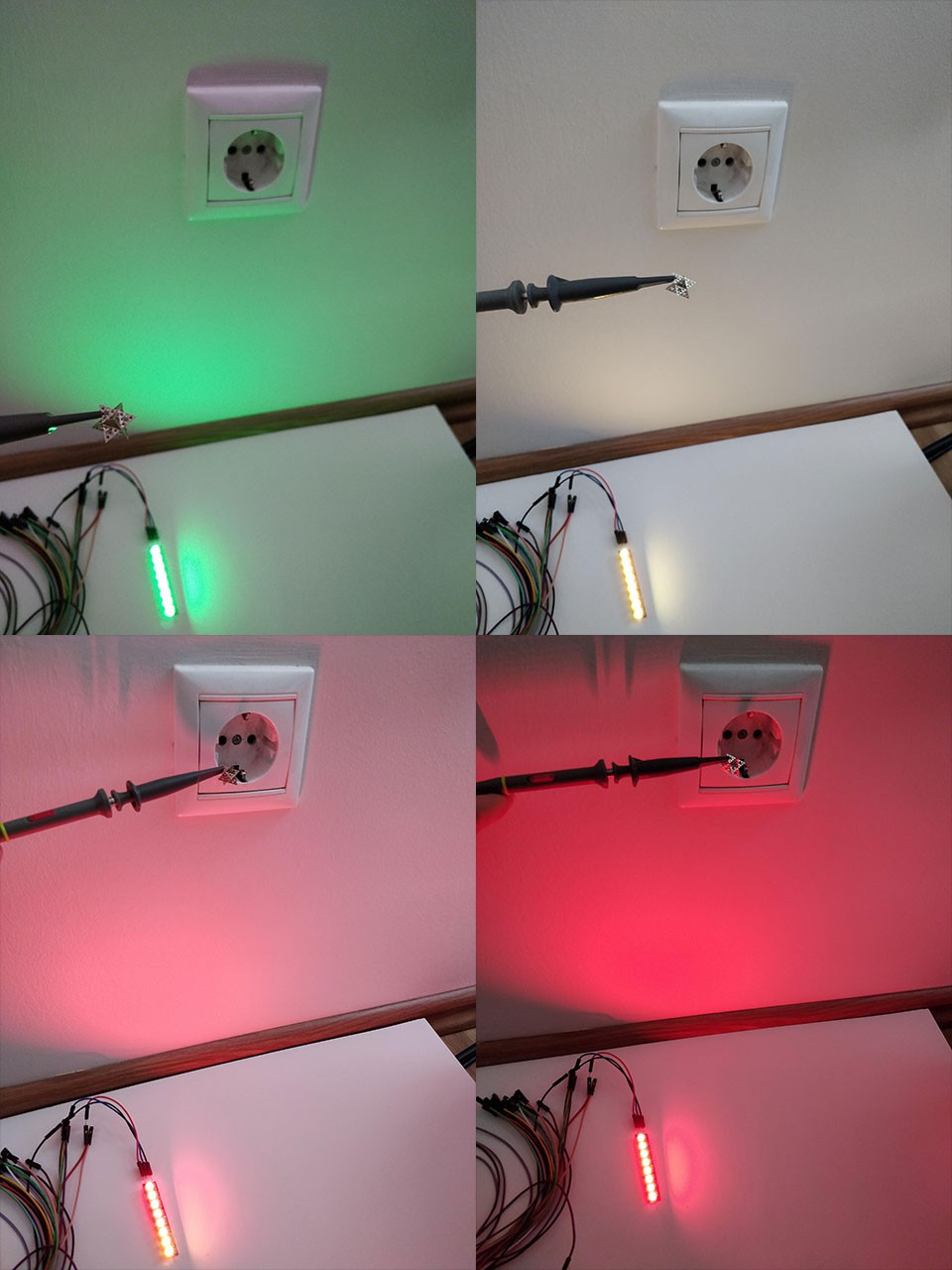Hi guys,
First of all I thank you all who are following this project, it means a lot. I think I owe you an update, because many things happened since the project was last updated.
I went to a few startup events, promoted the project and looked for an investor without too much luck so far, but that doesn't mean at all that the project is stalled. On the contrary! :)
I will not bore you with the countless test measurements I did in the last months, I will focus more one of my testing devices.
I used Digilent's Analog Discovery 2 and it's wonderful WaveForms platform to write some scripts to demonstrate the natural phenomena. Here is the setup:

So, as you can see the Analog Discovery's scope's input is connected to a special antenna. It is a 3D-printed fractal antenna from silver. The digital outputs of the Analog Discovery is connected to a NeoPixel LED array that I control from the script in WaveForms. (The WaveForms software lets you write scripts to control its scope,waveform generator,FFT,protocol analyzer, etc.)
The end results is rather intuitive and funky: if you get close to anything (living or non-living) that emits electromagnetic waves you get a color indication on the LED's about how strong that field is (compared to the ambient environment radiation). With this little device we can demonstrate the theory and the usefulness of this sampling of the very weak electromagnetic fields. It already revealed some of the radiation sources in my house :)
In the following pictures you can see a very simple case when I move the sensor closer to the power outlet. The outlets are emitting the 50/60Hz waves continuously, so they are easy to detect.

Interestingly enough I can show the energy field changes around our palms and it looks like it reacts to our focus and intentions. Fascinating stuff!
In the following weeks I'm going to meet a guy from a local incubator firm, I'll have a day-long workshop with a researcher/engineer who has a very promising sensor design, and I'll focus on the Venus-256 prototype by playing around with Raspberry Pi, .NET Core 3.0 and the AD7616 multi-channel ADC.
Stay tuned,
Andras
 Andras F
Andras F
Discussions
Become a Hackaday.io Member
Create an account to leave a comment. Already have an account? Log In.